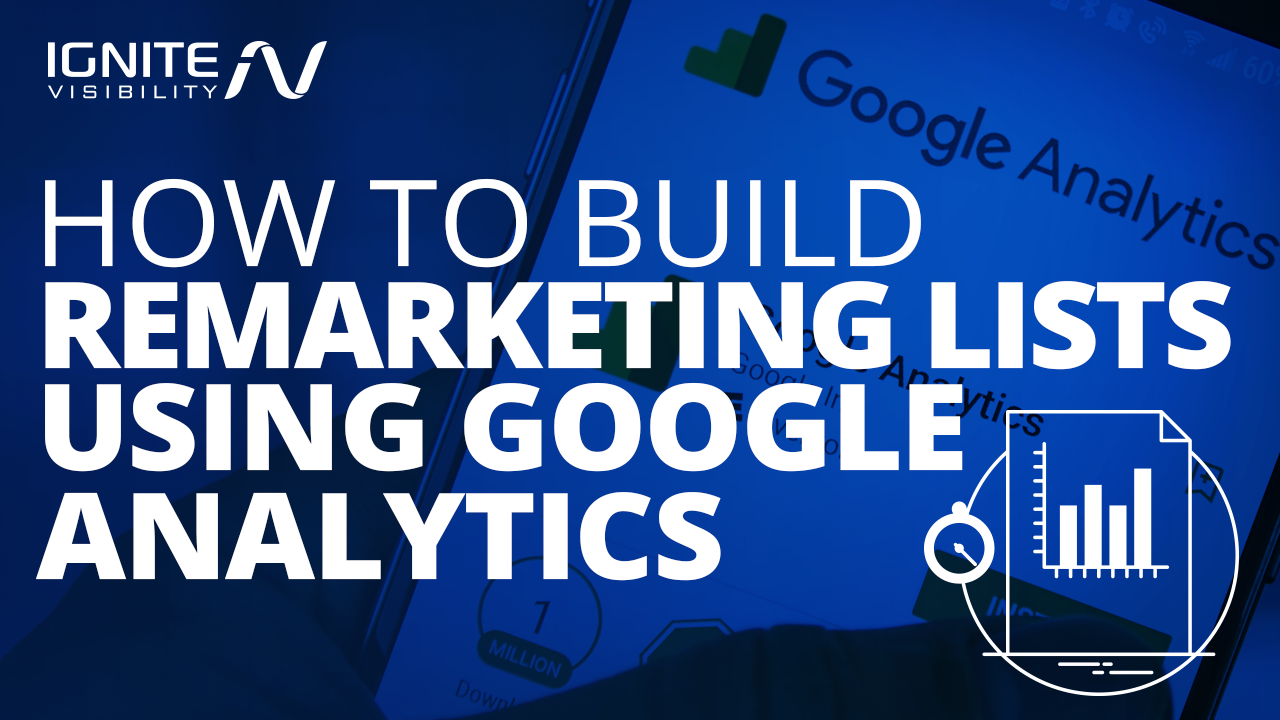Harnessing Remarketing in Google Analytics: A Comprehensive Guide
Using remarketing in Google Analytics offers companies a tactical edge in getting to out to prospective customers. This overview will certainly drop light on the necessary actions involved in using the complete capacity of remarketing in Google Analytics, leading to improved marketing outcomes.
Recognizing Remarketing in Google Analytics
Remarketing in Google Analytics allows businesses to purposefully target customers who have actually formerly engaged with their web site or mobile app. By leveraging information from Google Analytics, services can create tailored remarketing lists based upon user actions, such as pages visited, activities taken, or specific objectives achieved. This effective tool makes it possible for companies to re-engage with customers who have actually shown interest in their services or products, eventually increasing the probability of conversion.
Understanding the various kinds of remarketing strategies is critical for a successful project - What Is “Remarketing” In Google Analytics?. Google Analytics offers different options, including common remarketing, dynamic remarketing, and remarketing listings for search advertisements (RLSA) Each kind serves an one-of-a-kind purpose and can be tailored to satisfy details marketing goals
Moreover, analyzing the performance of remarketing projects is essential for optimizing results. Google Analytics offers important understandings right into the performance of different remarketing techniques, permitting organizations to make data-driven decisions and improve their targeting method. By continuously keeping an eye on and changing remarketing efforts based on analytics data, businesses can maximize ROI and drive success in their advertising campaigns.
Setting Up Remarketing Projects

After establishing up audience listings, the next step is to link Google Analytics with Google Advertisements. By linking these two systems, businesses can effortlessly transfer target market lists from Google Analytics to Google Advertisements for remarketing functions. This combination enables for more specific targeting and much better project performance.
Once the accounts are connected, services can produce remarketing projects in Google Advertisements using the target market lists formerly defined in Google Analytics. These projects can be personalized with specific ad creatives, messaging, and bidding process approaches to efficiently re-engage with previous visitors and drive conversions. By adhering to these steps, companies can utilize the power of remarketing to boost their advertising initiatives and increase ROI.
Making Use Of Audience Segmentation Strategies

Predefined segments in Google Analytics allow you to swiftly assess common audience categories like brand-new customers, returning customers, or users who finished a details objective on your website. Customized sections, on the various other hand, allow you to produce one-of-a-kind sectors based on specific requirements that are very important to your service purposes. Dynamic remarketing checklists instantly readjust based upon over here user actions, revealing tailored advertisements to customers that have actually engaged with your site specifically ways.
Analyzing Remarketing Efficiency Metrics
Upon assessing the efficiency of remarketing projects in Google Analytics, the analysis of key efficiency metrics supplies useful insights into target market engagement and conversion prices. By diving right into metrics such as click-through prices (CTR), conversion rates, price per procurement (CERTIFIED PUBLIC ACCOUNTANT), and return on advertisement invest (ROAS), marketing professionals can gauge the success of their remarketing efforts. CTR shows the percent of users who clicked on the ad after viewing it, showing the advertisement's importance and charm. Conversion rates gauge the portion of users that finished a desired action, such as purchasing, after clicking the ad. CPA exposes the average cost incurred for each conversion, aiding examine campaign profitability. ROAS, on the various other hand, measures the revenue created for every dollar invested in marketing. Evaluating these metrics makes it possible for marketers to enhance campaigns, fine-tune audience targeting, and designate budget plans efficiently to boost general remarketing efficiency.
Enhancing Remarketing Methods
When refining remarketing approaches in Google Analytics, concentrating on audience segmentation is vital for achieving campaign success. By separating your target market right into specific sections based on their habits, demographics, or passions, you can customize your ads better to each team. This targeted strategy raises the possibility of engaging individuals that have currently revealed passion in your services or products, causing greater conversion rates.
Another vital facet of optimizing remarketing strategies is continuously testing and refining your projects (What Is “Remarketing” In Google Analytics?). A/B screening various advertisement creatives, messaging, or deals can help you identify what resonates best with your target market and drives one of the most conversions. By assessing the performance of these examinations in Google Analytics, you can make data-driven choices to maximize your remarketing initiatives additionally
Moreover, Continued leveraging dynamic remarketing can considerably improve your project results. This attribute permits you to reveal tailored advertisements to individuals based on their previous communications with your web site, showcasing services or items they have actually previously viewed. By supplying customized material to users based on their behaviors and interests, vibrant remarketing can help raise involvement and drive conversions.
Final Thought
In final thought, taking advantage of remarketing in Google Analytics is a tactical approach to target customers who have actually previously involved with a web site. By creating customized audience lists and using target market division techniques, businesses can enhance remarketing advocate raised conversion rates. Analyzing efficiency metrics and constantly maximizing strategies are vital for taking full advantage of the effectiveness of remarketing efforts.
Google Analytics offers different options, including common remarketing, dynamic remarketing, and remarketing listings for search advertisements (RLSA)After establishing up target market listings, the next step is to connect Google Analytics with Google Advertisements. By connecting these two systems, organizations can effortlessly move target market checklists from Google Analytics to Google Advertisements for remarketing purposes.Once the accounts are linked, organizations can develop remarketing campaigns in Google Ads utilizing the audience provides formerly specified in news Google Analytics.When refining remarketing strategies in Google Analytics, focusing on target market segmentation is paramount for attaining project success.
Comments on “Trick Features of Remarketing In Google Analytics Explained”